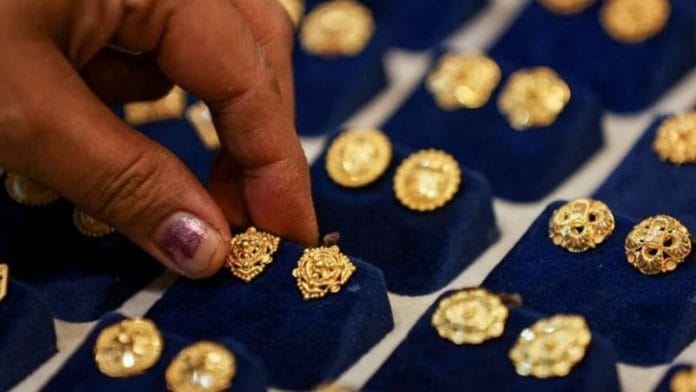In India, gold is not merely a commodity or a financial asset—it is an intrinsic part of the nation’s cultural fabric. For centuries, families across socio-economic backgrounds have relied on gold not just for adornment or investment, but as a form of generational wealth and financial security. This deeply embedded relationship makes gold loans one of the most accessible, viable, and reliable forms of credit in India.
Indian families collectively own approximately 25,000 tonnes of gold, which makes India the largest private holder of gold in the world. For perspective, this is almost six times larger than the gold inventory held at Fort Knox in the US, one of the world’s most heavily fortified gold reserves. This massive private accumulation is not simply wealth—it is emotion, tradition, and socio-economic resilience.
Gold loans have traditionally been an important financial lifeline for families, particularly in times of adversity. From financing healthcare and education to meeting farming expenditures or fulfilling short-term liquidity gaps, pledging gold is usually quicker, more convenient, and accessible than taking unsecured loans or going through elaborate banking formalities. Their pull comes from less documentation, faster disbursals, and lower interest rates than unsecured credit.
But this much-needed safeguard is now under threat from the Reserve Bank of India’s (RBI) new guidelines made public in mid-2025. Though intended to curb fraud and impose due diligence, the new norms direct lenders to refrain from extending gold loans where the ownership of collateral is doubtful and mandate formal evidence of gold ownership or a documented verification of such ownership which is a difficult requirement to fulfill in a nation where so much gold passes from one generation to the next or is transferred as gifts without paperwork. The guidelines also have more stringent loan-to-value ratios—maximising loans to 85 per cent of gold value for loans up to Rs 2.5 lakh, 80 per cent for Rs 2.5–5 lakh, and 75 per cent beyond that, covering interest and charges within these ceilings, essentially cutting the effective disbursed loan.
Additionally, borrowers are now required to completely repay ongoing gold loans before taking new loans, closing the earlier system of perpetuating loans by remitting interest alone. Lenders also have to evaluate borrowers’ earnings and capacity to repay, thus disadvantaging informal workers with no formal evidence of income. Other requirements constrain types of collateral, such as limiting jewellery pledges to 1 kg and gold coins to 50 grams, as well as precluding gold Exchange Traded Funds (ETFs) and mutual funds as collateral.
The issue is serious enough to warrant a parliamentary intervention, which I raised during my Zero Hour speech in the Budget Session on 27 March.
Also read: Ambitious PMFBY is failing. It has the same flaws of earlier schemes
Call for compassionate reform
The new requirements fail to account for how gold ownership works in Indian society. It’s often undocumented, inherited, and deeply personal. The following real-life stories reveal their unintended consequences:
In Kadapa district of Andhra Pradesh, K. Nagalakshmi, a marginal farmer’s wife, pawned her gold bangles gifted to her at her wedding 18 years ago to raise Rs 2 lakh for her husband’s emergency surgery after a tractor accident. The gold had no receipts; it was part of her dowry, passed from her mother. “I don’t have any paper to prove it’s mine,” she told The Hindu. “These bangles saved my husband’s life. If the bank asks for proof next time, what will I do?”
During the COVID-19 lockdown, Raju Singh, a pushcart vegetable vendor in Bihar’s Muzaffarpur, pledged his wife’s earrings to get a Rs 40,000 gold loan from a local lender. With no steady income proof or gold purchase bill, he used the money to buy fresh stock and restart his business.
In many Indian households, gold is not purchased with formal receipts. It is gifted at weddings, handed down through generations, or acquired long ago, often before digitisation or widespread receipt culture. The assumption that all borrowers can produce formal documentation is detached from the ground reality and culturally tone-deaf.
The rules may inadvertently displace legitimate borrowers, especially women, rural households, informal workers, and the elderly. In seeking to curb fraud, we risk pushing people away from formal credit systems and back into the arms of exploitative moneylenders.
While regulatory oversight is essential, it must be coupled with cultural awareness and practical flexibility. Gold loans are more than just financial instruments—they are the bridge between India’s cultural legacy and modern financial needs. RBI must look beyond spreadsheets and balance sheets to understand how Indians live with gold—as tradition, as trust, and as a fallback in times of need.
Regulation must serve both the integrity of the financial system and the dignity of its users. Only then can we preserve the value of gold as a source of security, not just in monetary terms but in the cultural heart of Indian life.
Karti P Chidambaram is a Member of Parliament for Sivaganga, and a Member of the All India Congress Committee. His X handle is @KartiPC. Views are personal.
(Edited by Ratan Priya)







RBI doesn’t mandate to get documentary proof, but as per availability. A declaration on ownership will also suffice.
Also the 1kg limit is on gold ornaments and not on jewellery.